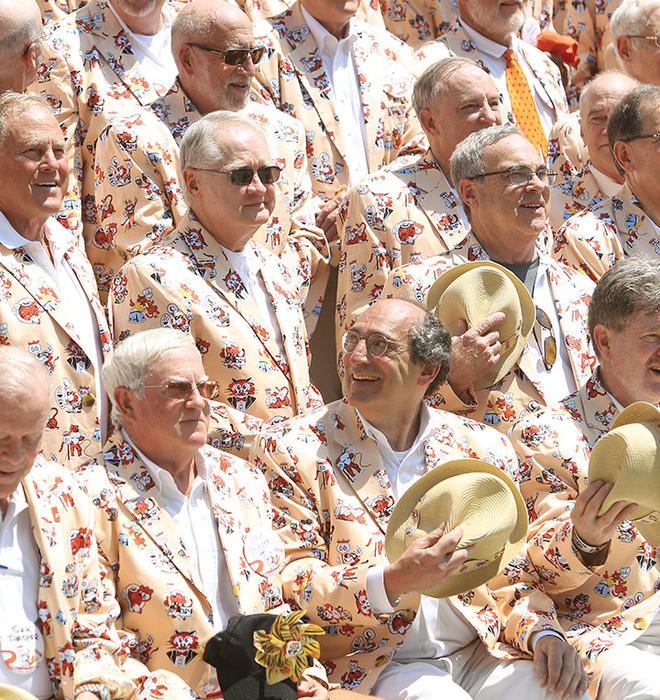
The Times They Were A-Changin’
Class of 1966 reunion video reflects on a campus in transition
The Class of ’66 entered Princeton at the end of one era and left it on the cusp of another. Classmates reflect on those tumultuous years — of civil rights and the Cuban missile crisis, Vietnam and the John F. Kennedy assassination, football and rock ’n’ roll — in a new 55-minute DVD, Looking Back: 50 Years Later, which the class produced for its 50th reunion.
The project was driven by former PAW editor Landon Jones ’66, who was inspired by the 2008 documentary Harvard Beats Yale, 29–29, which told the story of the historic 1968 football game by mixing archival footage with players’ reflections. Raising money from classmates, Jones and his crew filmed interviews over four years. In all, 17 people tell their stories.
“I did not want it to be a typical rah-rah thing,” Jones explains. “I wanted it to be a pretty honest take on Princeton and the 1960s and the changes that were gathering steam during the time that we were undergraduates.”
As the country changed between 1962 and 1966, so did the definition of what a Princeton student ought to be. The Class of ’66 was the last admitted by an admissions office seeking a group of well-rounded individuals. “Diversity” at that time, class members recall, meant recruiting at public high schools. A new admissions director, E. Alden Dunham III ’53, who arrived in 1962, sought to recruit students of more diverse talents and background who collectively would make up a well-rounded class.
In the film, John Williams ’66, one of only a handful of African American students in the class, recounts how a Nassau Street barber refused to cut his hair. John Lamb ’66 talks about being a closeted homosexual on a campus that was not supportive. “I viewed my time at Princeton as a time of successfully hiding. I was OK with that,” he says. Foreshadowing coeducation, the class also included some of the first women to attend Princeton, as critical-language students.
Often portrayed as conservative and conformist, the class also included Jon Wiener ’66, who started the Princeton chapter of Students for a Democratic Society. “We were proud of our adversary stance and we thought we represented, not just what was right, but the future,” he declares. American involvement in Vietnam was just beginning to escalate when the class graduated, and although five classmates would be killed in service, the war was not yet the issue it would become.
Those years were not all strife, of course. Princeton’s athletic teams were national powerhouses. Bob Dylan, Martha and the Vandellas, and other top musical acts appeared on campus. And no story of the class would be complete without mentioning Joseph D. Oznot ’68, the fictional student whose application was cooked up by four members of ’66. Oznot was admitted, and he receives “special thanks” in the credits.
Jones says he was impressed that their shared experience managed to pull such a diverse group into a cohesive whole. “A lot of these people had good reason not to like Princeton,” he observes. “But when they were interviewed 50 years later, they all talked with affection about what a wonderful place Princeton was. It’s sort of remarkable.”








No responses yet